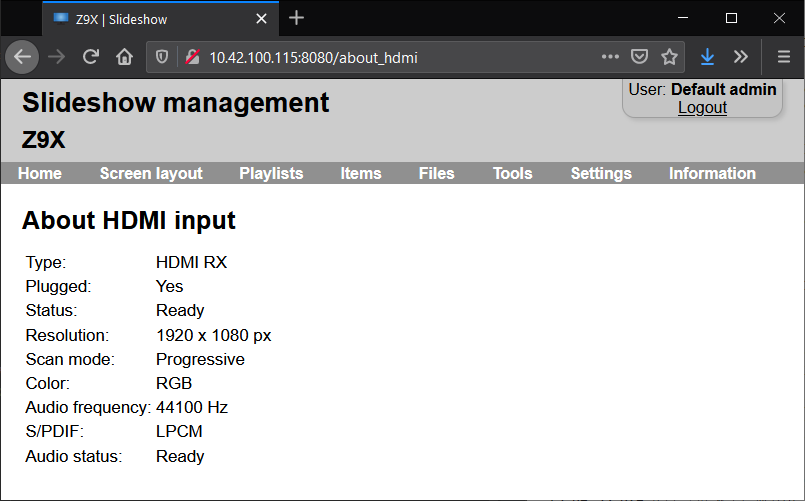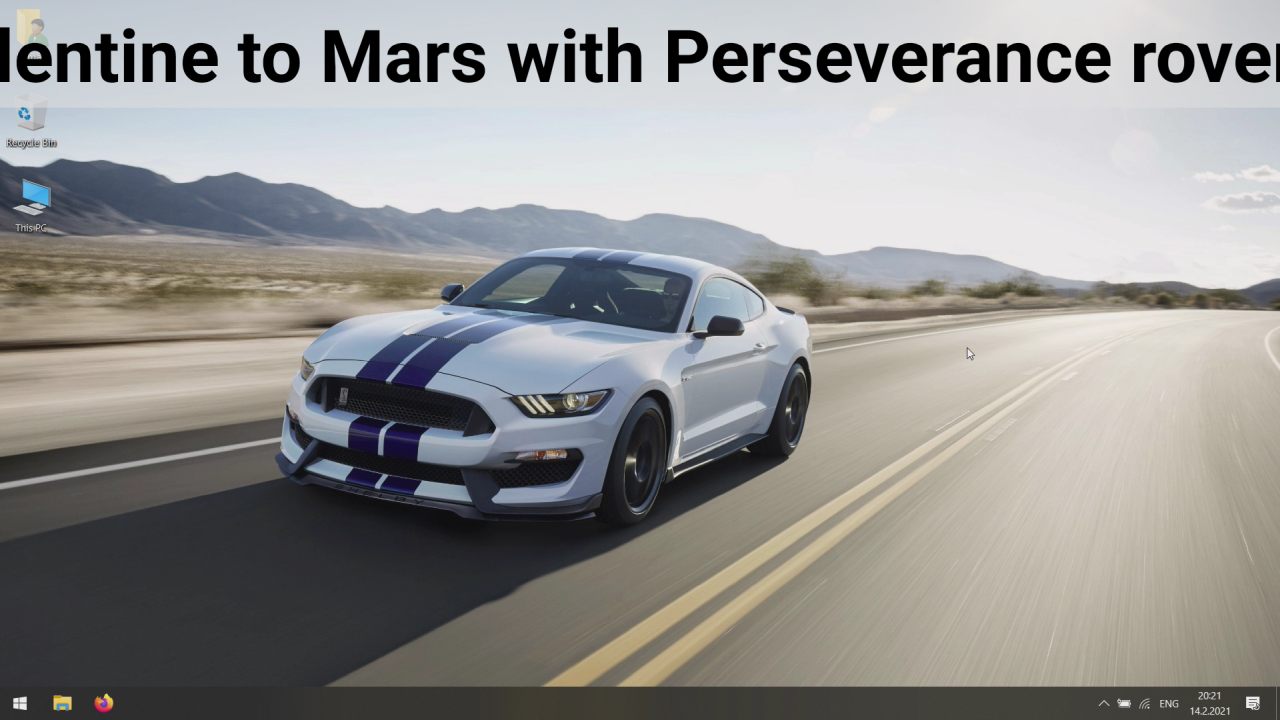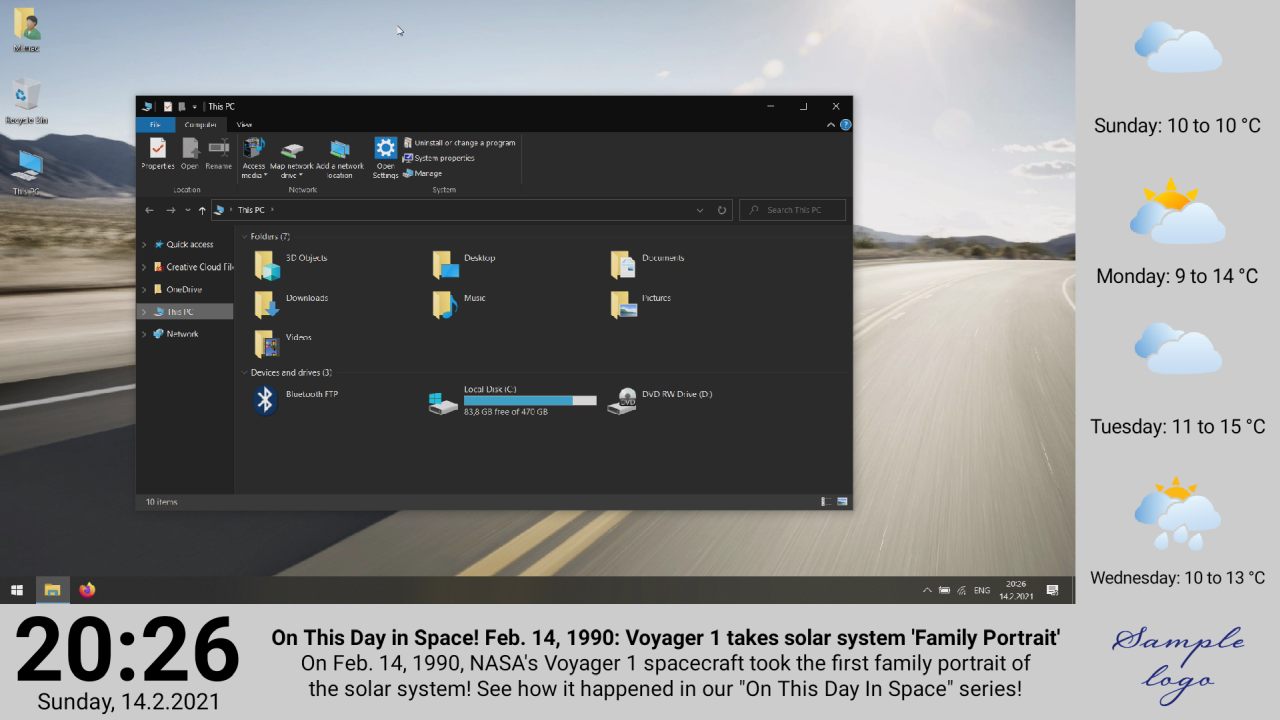In the first part of this review, I introduced Android box Zidoo Z9X, benchmarked it and covered its general features. Afterwards, I installed Slideshow app on the box and checked how the box and app performed together.
During the testing, I updated some features of Slideshow for better compatibility with the Z9X, so this review is valid for Slideshow versions 3.16.0 and newer.
Startup
Enabling “Start at system boot” setting in Slideshow doesn’t work on Z9X and as there is no root or debugging access, it’s almost impossible to find the reason why. However, there are two alternatives, which enables Slideshow to start automatically after the Z9X boots:
- Setting Slideshow as a Launcher / Home app
- Right clicking Slideshow icon in the list of installed apps and selecting Launch on startup
HDMI input
The main reason why I got Z9X is its HDMI input port. It’s quite a unique feature and there has been some demand for adding support for displaying HDMI input in Slideshow.
There are two ways how the HDMI input can be accessed on the Z9X:
- As a camera – HDMI input is mapped in Android as a rear camera, so you can display the video from the HDMI input even from a camera app. However, there is no way to access the audio, it isn’t mapped to a microphone or any other audio input. The camera is present in Android only if the HDMI input is active and there is actual signal. Otherwise, Android acts as if there was no camera at all.
- Native access – upon request, Zidoo offers a library and a sample source code, which can be used to access the audio and video from the HDMI input directly. It’s similar to a library for older Zidoo boxes on GitHub, but they are not directly compatible, as each library can be used only on the particular chipset. This access is also used by the preinstalled HDMI IN app.
Slideshow supports both ways by creating an item with type “Video input”, they will be displayed either as “Rear camera” or “Realtek HDMI IN”. After you add this item to a playlist and panel, the content of HDMI input will be displayed in the panel, or text “No input signal” will be displayed in case there is no active signal to the HDMI input port.
Root access
As mentioned in the first part of the review, Z9X can’t be rooted. That means some special features of Slideshow are not accessible. With the help of Zidoo support team, we were able to bring two features usually available only on rooted devices to Z9X as well:
- Remote reboot – instead of rebooting the device directly, Slideshow issues a command to Zidoo power app and this app reboots the device
- Remote update – similarly, Slideshow issues a command to Zidoo update app and this app updates Slideshow app. However, sometimes you have to manually start Slideshow app after the update, it might not start automatically as on rooted devices.
General usage
I have been using Z9X with Slideshow for almost a month and there have been no problems with stability, the device hasn’t frozen or crashed. It supports all the current features of Slideshow.
Most of the time, it has been connected via WiFi, there has been no connection issues during this time. The box connected to the WiFi network within a few seconds and remained connected, which is not that common with Android boxes. I tested it only on my home network, as it’s not safe to connect Z9X to a public or shared network, due to its unprotected remote access.
Slideshow on Z9X can play almost all test video files mentioned in the first part of the review. One exception is videos with bitrate over 200 Mbps, they are not as smooth as with native video player in case there are multiple panels on the screen. Slideshow has to manage more content on the screen than just the video, so it’s not a surprise that the performance left for the video handling is a little bit lower.
Conclusion
In the first part of the review, I established that Zidoo Z9X is a good choice for a trouble-free high-definition media center. So how about using it as a digital signage player? In my opinion, it pays off if you are planning to use the HDMI Input, as there are only a few devices with this feature on the market. Other than that, you get a non-rooted device with FullHD user interface (no 4K framebuffer) and unprotected remote access for more than 200 EUR. If you don’t need the HDMI input, I suggest looking for a different device. You can easily find a cheaper one, that is rooted, for example one of the boxes based on Amlogic S905X2 or S905X3.



